The first word usually appeared when the child is one year old. Early words that are often used by a child are family kinship such as mommy, daddy and nanny. In addition, other early words that often used by a child are familiar items or commands such as milk, I want, no and so on.
A mother will be extremely happy when she hears her child called her mommy for the first time. A mother often developed jealousy towards a father when the baby’s first word is daddy and not mommy.
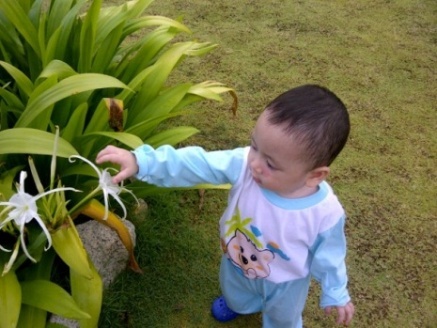
Pre-verbal Skills
Babies pay attention towards intonation, facial expression and surroundings. Mother usually talks to the infants using infant-directed language with slower rate and repetitive tone. Child- or infant-directed language is one of the important techniques to encourage early communication skills such as eye contact, attention and turn taking in making sounds. These early communication skills are known as pre-verbal skills.
Learning to Talk
- Verbal Imitation
Baby starts imitate adult by making sounds or jargons.
- Verbal Production with meaning
At certain point, baby will start to understand that sounds or words that he/ she produced has meanings.
- Verbal Production with articulation and phonological errors
Children who are just begun to talk usually make articulation errors such as saying ‘baba’ instead of ‘daddy’ or ‘dada’. Articulation errors at early stage of spoken language learning are considered normal. This stage of learning is called phonology development. When the child getting older, his / her, child’s articulation and phonology skills will develop well.
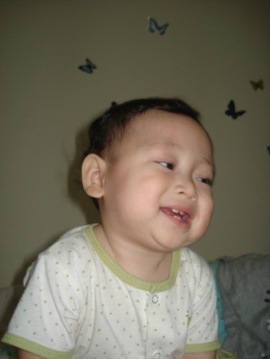
Below are some of the phonological errors that are common among children:
- Initial syllable deletion
Child will delete initial syllable and produce only the last syllable of the words such as ‘kan’ for ‘makan’ and ‘ju’ for ‘baju’.
- Initial phoneme deletion
Child may deleted the first sound in the words. For example, child says ‘ata’ for ‘mata’. The first consonant ‘m’ was deleted.
- Substitution
Every single sounds either vowels or consonants are developed at different age. Bilabial sounds such as /m/ (do it for all sounds)m/, p and b developed early as compared to palatal sounds such as k and g.
Child tends to substitute sounds that are not well develop yet with sounds that s/he already mastered. For example, child produced ‘matan’ instead of ‘makan’. /k/ was substituted with /t/.
Language Stimulation
Parent can encourage child to talk by following these few ideas:
- Encourage production of meaningful sounds
Parent should encourage child to produce meaningful sounds. For example teach child that cow has a sound of ‘moo’, cat has a sound of ‘meow’, and car has a sound of ‘pon-pon’. Meaningful sounds are easier to produce as compared to words. If your child has not yet produced his/ her first word, you might want to encourage he/she to produce more meaningful sounds as a start.
- Understand how children learn
Children learn using four (4) main methods that are LISTEN, LOOK, EXPERIENCE and REPEAT. Parent should use all these methods to stimulate child’s language. Parent plays an important role in giving language stimulation by repeating the words, commenting the activities and giving the child opportunity to talk and to experience things around him or her.
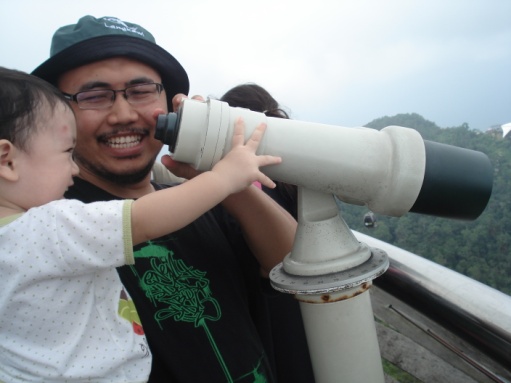 For example, if parent wants to teach child about a ball, parent should first let the child plays with the ball. Let the child kick the ball, throw the ball and share the ball with others. Parent also needs to repeat and emphasis the word ‘ball’ during play. “Take this ball”, “Kick the ball”. “Good, You catch the ball”. Always repeat the targeted words.
For example, if parent wants to teach child about a ball, parent should first let the child plays with the ball. Let the child kick the ball, throw the ball and share the ball with others. Parent also needs to repeat and emphasis the word ‘ball’ during play. “Take this ball”, “Kick the ball”. “Good, You catch the ball”. Always repeat the targeted words. - Reinforcement or encouragement
Reinforcement is important to encourage child to continue talking. Parent should be alert with every single production by the child. Every words of encouragement that come from parent are the best tools to get the child to talk.
- Teach in right context
Child learns fast if parent teach meaningful sounds or words in the right context. For example, if parent wants to teach meaningful sound ‘eee’ for dirty, so, every time before child washes his or her hand, parent can say ‘eee, dirty’ while pointing at the child’s hand and wash it off. Repeat the same sounds or words whenever child sees dirty hand, cloths or plays with mud and so on.
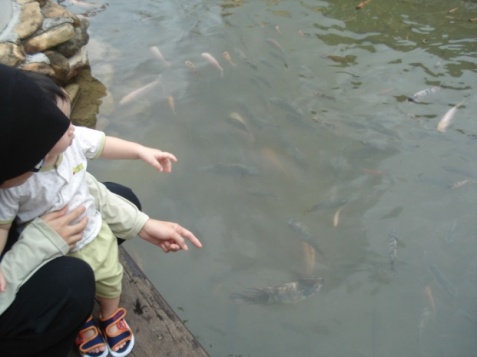
- Avoid baby talk
Parent should always remember not to imitate how children talk. Children talk with articulation and phonological errors. Parent is a language model to children. Parent should talk with good articulation, so that, children will hear and process the right words. If child says ‘catit’ for ‘sakit’, parent should respond back by saying, ‘tangan sakit. Kesian, abang sakit”
- Wait for respond
Child usually use pointing to indicate needs. Do not respond immediately to child’s pointing, instead wait for any sounds or words from the child. Use facial expression to tell child that you are waiting for the sounds or words from him or her
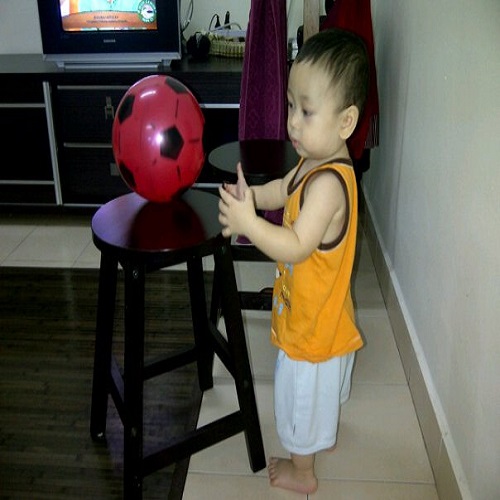
- Says word first
If child still does not want to talk and starts to tantrums or cry, say the word for him or her. “Irham wants ball? This is a ball”. Only give the item to the child after you named the item for him or her. This will help the child to focus on your words before he shifts his attention to the ball.
- Give choices
Encourage your child to talk by giving him choices. For example, if you know that your child wants a bread, ask your child, “Do you want rice or bread?”. Parent should say the desired item at the end of sentence, so child easy to imitate the targeted word.
- Create opportunity for child to talk
Keep toys or child’s items of interest that is not easily reach by the child but he still can see them. You can also keep the toys in a covered box. This will create opportunity for the child to communicate or talk to you if he wants the toys.
- Sabotage
Sabotage is one of the ways to create opportunity for child to talk. Sabotage the child when he is playing by hiding his toys or put it in a tight closed box. This will encourage child to say ‘I don’t want, no, cannot’.
However, if parents found the child still cannot utter any words at the age of two, consult a doctor immediately and get a referral to a Speech-Language Therapist at nearby hospital. Early treatment is better rather than waiting until child reached school-age.
References
- Merkel-Piccini R. (2001) Phonological Processes, Super Duper Publication.
- Paul R. (2004) Language Disorders From Infancy Through Adolescent: Assessment and Intervention 3rd Edition Mosby.
| Last Reviewed | : | 28 August 2020 |
| Writer | : | Ruby Izyan Atika bt Abu Bakar |
| Translator | : | Rozila binti Sumardi |
| Accreditor / Reviewer | : | Nadwah bt. Onwi |







